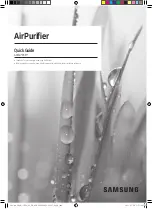
5370597-JIM-D-1019
Johnson Controls Ducted Systems
51
Adjust second stage (100% input) pressure first, then adjust
first stage (70% input) pressure.
1.
Turn off all power to the unit.
2.
Using the outlet pressure port on the gas valve, connect a
manometer to monitor the manifold pressure.
3.
Remove plastic cap covering HI and LO pressure
adjustment screws.
4.
Turn on power to the unit.
5.
Set thermostat to call for second stage heat and start
furnace.
6.
If necessary, using a screwdriver, turn the
second stage
adjustment screw (adjacent to the “HI” marking on the
valve) clockwise to increase manifold pressure or
counterclockwise to decrease manifold pressure.
Be sure
not to over-fire the unit on second stage
.
7.
After the high manifold pressure has been checked, adjust
the thermostat to call for first stage heat.
8.
If necessary, using a screwdriver, turn the first stage
adjustment screw (adjacent to the “LO” marking on the
valve) clockwise to increase manifold pressure or
counterclockwise to decrease manifold pressure.
Be sure
not to under-fire the unit on first stage
.
9.
Once pressure has been checked, replace the plastic cap
covering the HI and LO pressure adjustment screws.
NOTE:
When using natural gas, the manifold pressure for
second stage (100% input) should be 3.5 IWG ± 0.3.
The manifold pressure for first stage (60% input) when
using natural gas should be 1.5 IWG ± 0.3.
Adjustment Of Temperature Rise
The temperature rise (the difference of temperature between the
return air and the heated air from the furnace) must lie within the
range shown on the CSA rating plate and the data in Table 10.
After the temperature rise has been determined, the CFM can
be calculated as follows:
After about 20 minutes of operation, determine the furnace
temperature rise. Take readings of both the return air and the
heated air in the ducts (about 6 feet from the furnace) where
they will not be affected by radiant heat. Increase the blower
CFM to decrease the temperature rise; decrease the blower
CFM to increase the rise (See SUPPLY AIR DRIVE
ADJUSTMENT).
NOTE:
Each gas heat exchanger size has a minimum
allowable CFM. Below this CFM, the limit will open.
Burners/Orifices Inspection/Servicing
Before checking or changing burners, pilot or orifices, CLOSE
MAIN MANUAL SHUT-OFF VALVE AND SHUT OFF ALL
POWER TO THE UNIT.
1.
Open the union fitting just upstream of the unit gas valve
and downstream from the main manual shut-off valve in
the gas supply line.
2.
Remove the screws holding each end of the manifold to the
manifold supports.
3.
Disconnect wiring to the gas valves and spark igniter's.
Remove the manifold & gas valve assembly. Orifices can
now be inspected and/or replaced.
To service burners, complete step 4.
4.
Remove the heat shield on top of the manifold supports.
Burners are now accessible for inspection and/or
replacement.
NOTE:
Reverse the above procedure to replace the
assemblies.
Make sure that burners are level and seat at the rear of the gas
orifice.
Figure 29: Typical Flame
Table 28: Gas Heat Stages
Unit
# of Burner
Tubes
1st Stage
Input (Mbh)
2nd Stage
Input
(Mbh)
Total
Input
(Mbh)
Size
Opt.
JA3
N06
4
45
15
60
N08
4
56
24
80
N12
6
84
36
120
JA4
N06
4
45
15
60
N08
4
56
24
80
N12
6
84
36
120
JA5
N08
4
56
24
80
N12
6
84
36
120
N16
8
112
48
160
HEAT EXCHANGER TUBE
BURNER FLAME
(BLUE ONLY)
IGNITOR
BURNER BRACKET
BURNER
GAS
SUPPLY
PIPE
















































